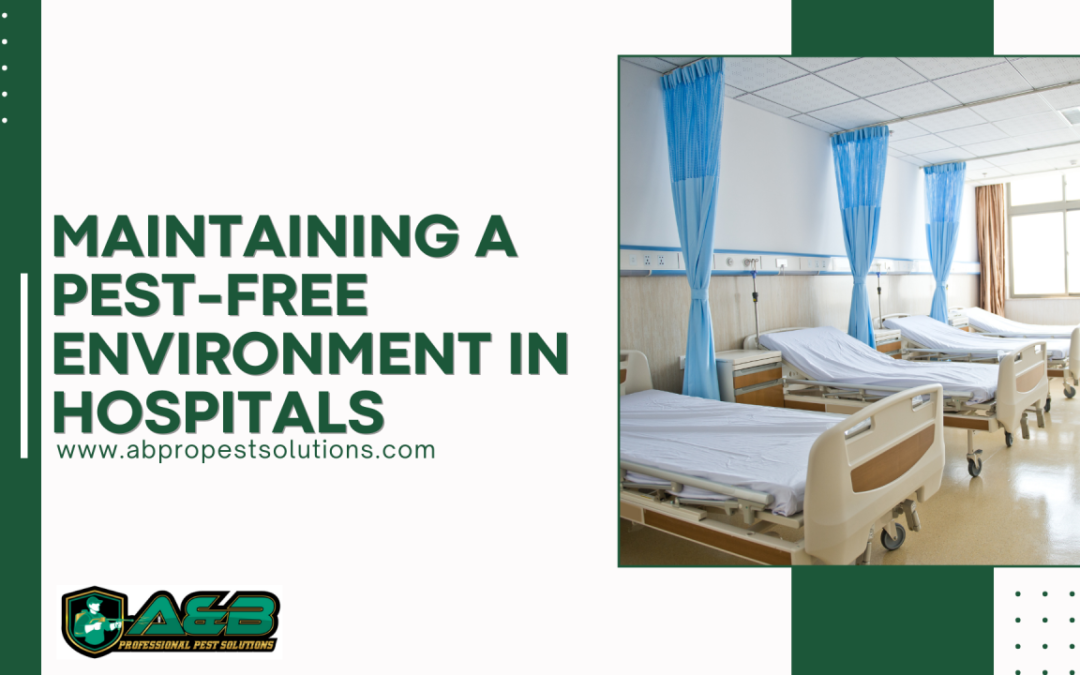Hospitals are critical environments where maintaining cleanliness and hygiene is paramount. A pest-free environment is essential to protect patients, staff, and visitors from health risks and to comply with stringent health regulations. Integrated Pest Management (IPM) is a sustainable approach that combines preventive measures, monitoring, and control strategies to keep hospitals free from pests. This article explores the importance of pest management in hospitals, effective strategies, and practical implementation tips.
Importance of Pest Management in Hospitals
1. Health and Safety:
- Pests such as rodents, cockroaches, and ants can carry and spread diseases, contaminate sterile areas, and trigger allergies and asthma. Effective pest management reduces these health risks, ensuring a safer environment for patients and staff.
2. Regulatory Compliance:
- Hospitals must adhere to various health and safety regulations, including those related to pest control. Implementing a robust IPM program helps hospitals meet these regulatory requirements and avoid potential penalties.
3. Protecting Reputation:
- Maintaining a pest-free environment is critical to the reputation of healthcare facilities. Pest sightings can damage a hospital’s reputation and erode trust among patients and the community.
Effective Strategies for Pest Management in Hospitals
1. Sanitation and Waste Management:
- Regular Cleaning: Implement rigorous cleaning schedules, focusing on areas where food is prepared and consumed, such as kitchens and cafeterias.
- Proper Waste Disposal: Ensure waste is disposed of promptly and appropriately. Use sealed bins and maintain cleanliness around waste disposal areas to prevent attracting pests.
2. Exclusion Techniques:
- Sealing Entry Points: Inspect and repair any cracks or gaps in walls, doors, and windows to prevent pests from entering the building.
- Physical Barriers: Install door sweeps, screens, and air curtains to block pest entry points, particularly in high-traffic areas like entrances and exits.
3. Monitoring and Inspection:
- Regular Inspections: Conduct routine inspections of the facility, including storage areas, patient rooms, and utility spaces, to detect early signs of pest activity.
- Use of Traps and Sensors: Deploy traps and electronic monitoring devices to track pest activity and gather data for informed decision-making.
4. Chemical Controls:
- Targeted Treatments: When chemical treatments are necessary, use targeted applications to minimize exposure and prevent contamination. Always follow safety guidelines and use approved products.
5. Employee Training and Education:
- Staff Training: Educate staff on IPM practices, the importance of sanitation, and how to identify and report pest sightings.
- Continuous Education: Keep employees informed about new pest management techniques and regulations through regular training sessions.
Implementation Tips
1. Develop a Comprehensive IPM Plan:
- Create a detailed IPM plan that includes preventive measures, monitoring protocols, and control strategies. Regularly review and update the plan to address new challenges and improve effectiveness.
2. Document and Review:
- Keep detailed records of pest management activities, including inspection results, monitoring data, and actions taken. This documentation supports regulatory compliance and helps track the effectiveness of the IPM program.
3. Collaboration with Pest Control Professionals:
- Partner with experienced pest control professionals who can provide expertise and resources for implementing and maintaining an effective IPM program.
4. Patient and Staff Engagement:
- Engage patients and staff in maintaining a pest-free environment by promoting cleanliness and encouraging the reporting of pest sightings. Awareness campaigns and educational materials can help reinforce these practices.
Maintaining a pest-free environment in hospitals is crucial for ensuring the health and safety of patients, staff, and visitors. By implementing a comprehensive IPM program that combines sanitation, exclusion, monitoring, and targeted treatments, hospitals can effectively manage pests and comply with health regulations. Continuous education and collaboration with pest control professionals further enhance the success of pest management efforts, contributing to a safe and hygienic healthcare environment.
To know more about A&B’s services, please visit the A&B’s website (www.abpestsolutions.com.ph) or Facebook Page (https://www.facebook.com/ABPestSolutions/) to know more about their services. A&B also disinfects workplaces or houses to kill COVID-19 Virus.
You may also contact: +63 905 496 4550 and +63 951 062 4830
A&B Professional Pest Solutions Corporation is located at the Ground Floor of Monterey Building at Genesis St., Centro de San Lorenzo, Santa Rosa, 4026 Laguna, Philippines

